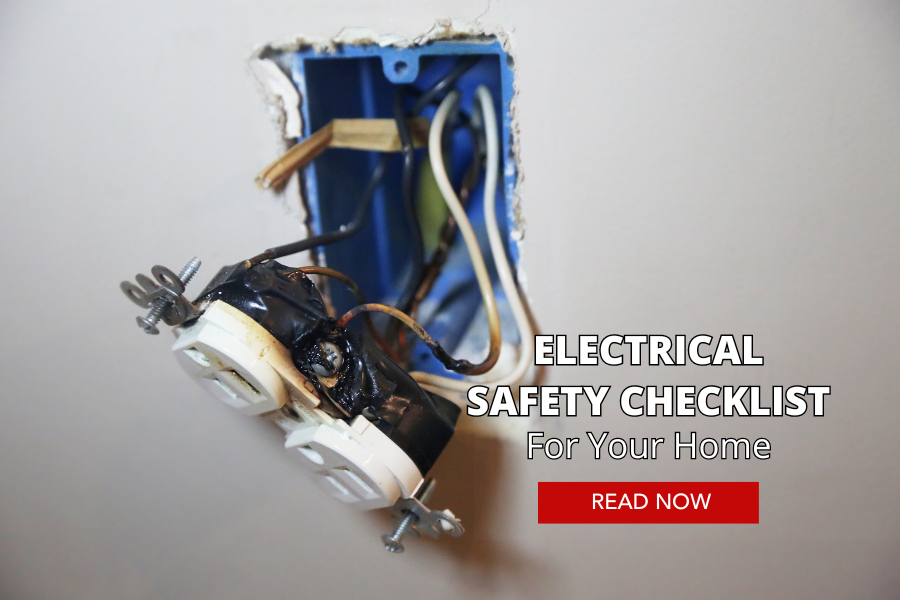Electricity is a powerful force that keeps our homes comfortable and functional. However, neglecting electrical safety can lead to serious hazards like fires and electrical shocks. Here’s a comprehensive checklist to help you identify and address potential electrical problems in your home. You can download and print this checklist to conduct a monthly routine inspection of your home.
Outlets and Switches:
- Check for Damage: Look for cracked, chipped, or discolored outlets or switches. These can indicate overheating or faulty wiring.
- Test for Looseness: Make sure outlets and switches are firmly secured to the wall. Loose outlets can create sparks and pose a fire risk.
Inspect Covers: Ensure all outlets and switches have proper faceplates. Exposed wiring is a shock hazard. - GFCI Protection: Verify that outlets in kitchens, bathrooms, laundry rooms, and garages have Ground Fault Circuit Interrupter (GFCI) protection. GFCIs can prevent serious shocks in areas with moisture exposure.
Cords and Plugs:
- Avoid Overloading: Don’t plug too many appliances into a single outlet. This can overload the circuit and create a fire hazard.
- Inspect for Damage: Look for frayed, cracked, or damaged cords. Damaged cords can cause overheating and sparks. Dispose of any damaged cords immediately.
Proper Cord Use: Avoid running cords under carpets or over furniture. This can damage cords and create a fire risk. - Unplug Unused Appliances: Don’t leave appliances plugged in when not in use. This can waste energy and potentially lead to electrical problems.
Lighting Fixtures:
- Match Wattage: Ensure bulbs match the wattage specified for the fixture. Exceeding the wattage can overheat the fixture and pose a fire risk.
- Loose Bulbs: Check for loose bulbs in light sockets. Loose bulbs can create sparks and damage the fixture.
- Damp Locations: Use fixtures with water-resistant ratings in bathrooms, kitchens, and other areas with moisture exposure.
- Ceiling Fan Safety: Inspect ceiling fans for loose blades or wiring. Ensure the fan is securely mounted to the ceiling.
General Electrical Safety:
- Smoke Detectors and CO Detectors: Test smoke detectors and carbon monoxide detectors monthly and replace batteries as needed.
- Panel Box: Keep your electrical panel clean and clear of clutter. Never store flammable materials near the panel.
- Know When to Call a Professional: If you experience any electrical problems like flickering lights, buzzing sounds, or burning smells, don’t hesitate to call a qualified electrician.
Additional Tips:
- Schedule Regular Inspections: Have your home’s electrical system inspected by a qualified electrician every 5-10 years, or more frequently if your home is older or has undergone significant renovations.
By following this checklist and remaining vigilant, you can help create a safe electrical environment in your home for yourself and your family. Remember, electrical safety is not something to take lightly. Don’t hesitate to seek professional help if you encounter any electrical problems beyond your comfort zone.

